No Results Found
The page you requested could not be found. Try refining your search, or use the navigation above to locate the post.


How Does a Ventless Gas Fireplace Installation Differ from a Traditional Vented Fireplace?
Gas fireplaces are increasingly popular in modern homes, offering warmth and ambiance without the hassle of wood-burning models. Homeowners often find themselves deciding between two main options: ventless gas fireplaces and traditional vented fireplaces. Each type has its own set of advantages and considerations, and understanding the key differences is crucial when planning an installation. At Always A Sweep, we specialize in both types, ensuring that your choice aligns perfectly with your home’s needs.

A ventless gas fireplace, as the name suggests, does not require a vent to expel combustion gases outside the home. Instead, it is designed to burn gas efficiently enough to minimize the production of harmful byproducts, such as carbon monoxide. These fireplaces are often easier to install and can be placed in virtually any room.
In contrast, a traditional vented gas fireplace relies on a chimney or vent to expel combustion byproducts outside the home. These fireplaces typically use a direct vent system, which pulls in outside air for combustion and exhausts it back outside through a vent pipe.
One of the major advantages of ventless gas fireplace installation is the simplicity of the process. Since there is no need for a chimney or vent, installation can be completed quickly and with minimal disruption to your home. Always A Sweep offers professional installation services that ensure your ventless fireplace is safely integrated into your space.
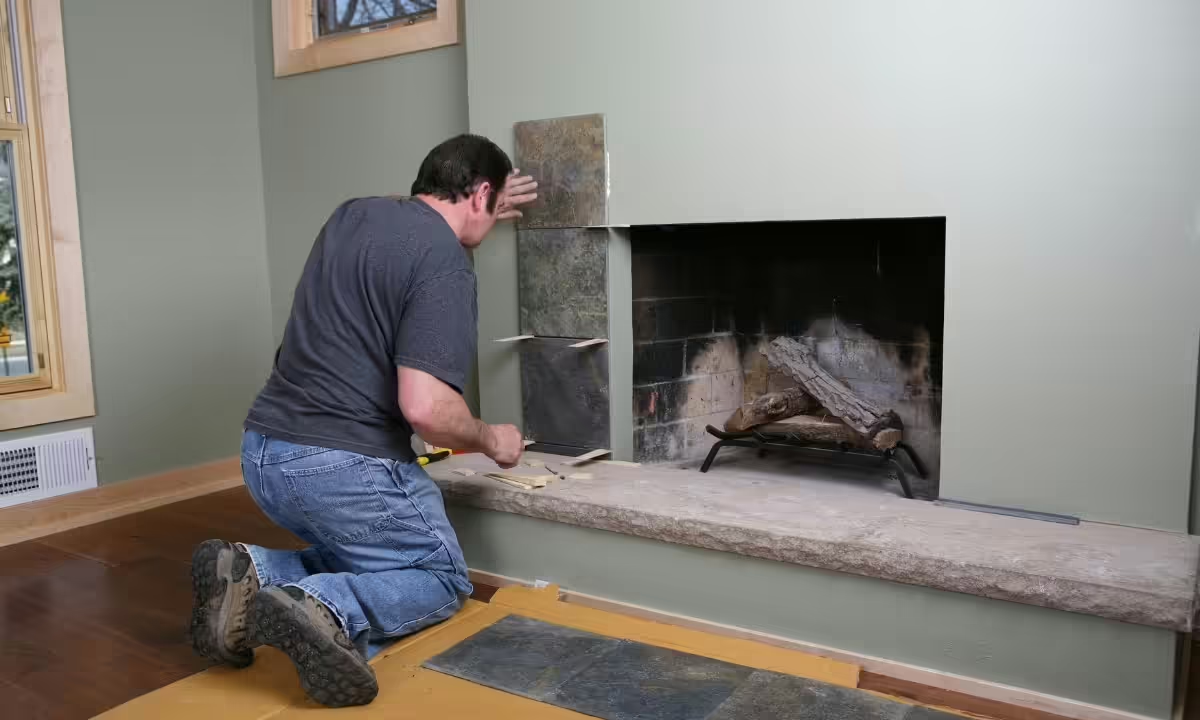
Installing a traditional vented gas fireplace is a more involved process. It requires careful planning and construction to ensure proper ventilation. This type of installation is best suited for new constructions or major renovations where integrating a chimney or venting system is feasible.
Safety is a significant concern when it comes to ventless gas fireplaces. Since they vent combustion gases directly into the room, it is crucial to ensure that the fireplace is properly maintained and operated. Always A Sweep emphasizes the importance of regular inspections and the use of carbon monoxide detectors in homes with ventless fireplaces.
Traditional vented gas fireplaces are generally considered safer because they expel combustion gases outside the home. However, the installation must be correctly executed to prevent leaks and other issues. Always A Sweep’s experienced team ensures that your vented fireplace is installed according to the highest safety standards.
When it comes to heating efficiency, ventless gas fireplaces have the upper hand. Since they do not lose heat through a vent, nearly all the heat generated stays inside the room. However, traditional vented fireplaces, while slightly less efficient, provide a more authentic fireplace experience with a focus on aesthetics and ambiance.
Cost is always a factor when deciding on a fireplace installation. Ventless gas fireplaces are generally more affordable upfront due to the simpler installation process. However, they may require more frequent maintenance to ensure air quality and safety. Traditional vented fireplaces may have higher initial costs due to the complexity of installation, but they typically require less ongoing maintenance.
Choosing between a ventless gas fireplace and a traditional vented fireplace depends on your specific needs, preferences, and the layout of your home. Ventless fireplaces offer convenience and efficiency, making them ideal for retrofitting into existing spaces. Traditional vented fireplaces, on the other hand, provide a classic look and feel, along with enhanced safety. Always A Sweep is here to help you make the best choice for your home, ensuring a professional installation that meets all safety standards.
Ready to enhance your home with a new gas fireplace? Contact Always A Sweep today at https://alwaysasweep.com/ for expert advice and installation services.
The page you requested could not be found. Try refining your search, or use the navigation above to locate the post.


Installing a gas fireplace can be a daunting task for homeowners who are unfamiliar with the intricacies involved. Many people find themselves overwhelmed by the technical and safety aspects, leading to delays and potential hazards. Without professional guidance, homeowners may face challenges in selecting the right fireplace model, ensuring proper ventilation, and adhering to building codes.
The complexity of the installation process highlights the need for expert assistance to ensure a safe and efficient setup. Without professional help, the risk of errors and accidents increases significantly.
Improper installation of a gas fireplace can lead to several serious consequences, impacting both safety and performance. A poorly installed gas fireplace may not only fail to function optimally but also pose significant safety risks.
These risks underscore the importance of a professional gas fireplace installation to ensure safety, performance, and peace of mind.

To avoid the risks associated with improper installation, it is essential to hire professionals who can handle the complexities of the process. Here is a detailed overview of the steps involved in a professional gas fireplace installation by Always A Sweep.
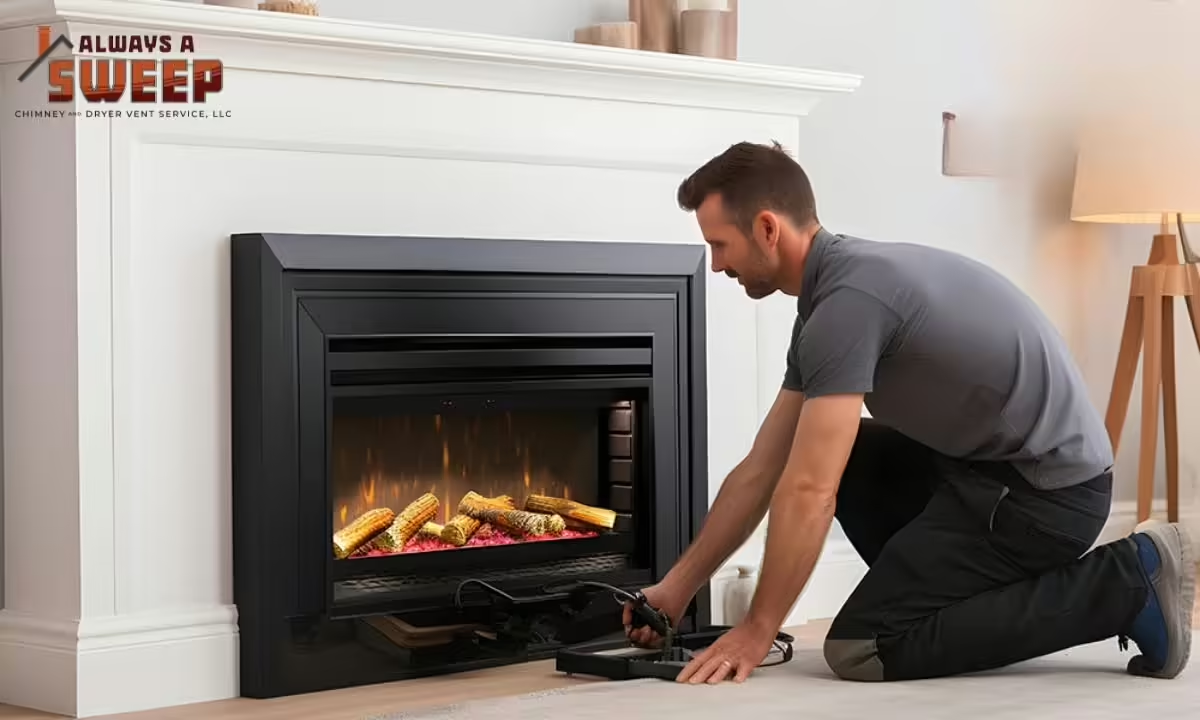
The first step in the gas fireplace installation process is an initial consultation and assessment. During this stage, our experts will evaluate your home and discuss your preferences and needs.
This initial consultation ensures that all aspects of the installation are carefully planned and tailored to your specific requirements.
Choosing the right gas fireplace is crucial for both functionality and aesthetics. Always A Sweep offers a wide range of options to suit your preferences and budget.
Selecting the right fireplace ensures that it not only enhances your home’s ambiance but also meets your heating needs effectively.
Once the fireplace is selected, the next step involves preparing the installation site. This phase ensures that the area is ready for a safe and efficient installation.
Preparation is key to a successful installation, ensuring that all components are in place and ready for the next steps.
The actual installation of the gas fireplace is a critical step that requires expertise and precision. Our experienced technicians handle all aspects of the installation process.
This step is executed with meticulous attention to detail to ensure the fireplace is installed correctly and safely.
A crucial aspect of gas fireplace installation is ensuring proper ventilation and exhaust systems. These systems are vital for safe and efficient operation.
Proper ventilation is essential for preventing carbon monoxide buildup and ensuring the fireplace operates safely.
Before completing the installation, a thorough inspection and testing are conducted to ensure everything is in perfect working order.
This step ensures that the fireplace is ready for use and that you are confident in its operation and safety features.
After installation, ongoing maintenance is essential to keep your gas fireplace in optimal condition. Always A Sweep offers comprehensive maintenance and support services.
Proper maintenance ensures the longevity and performance of your gas fireplace, providing comfort and enjoyment for years to come.
Do not risk the safety and performance of your gas fireplace with a DIY installation. Trust the experts at Always A Sweep to handle the installation process with precision and expertise. Our team is dedicated to providing the highest quality service, ensuring your fireplace is installed safely and efficiently.
Visit https://alwaysasweep.com/ to learn more about our services and schedule your professional gas fireplace installation today.
By following the professional installation steps outlined above, you can ensure a safe and efficient gas fireplace setup that enhances the comfort and ambiance of your home. Trust Always A Sweep to provide expert installation and ongoing support for all your fireplace needs.
The page you requested could not be found. Try refining your search, or use the navigation above to locate the post.

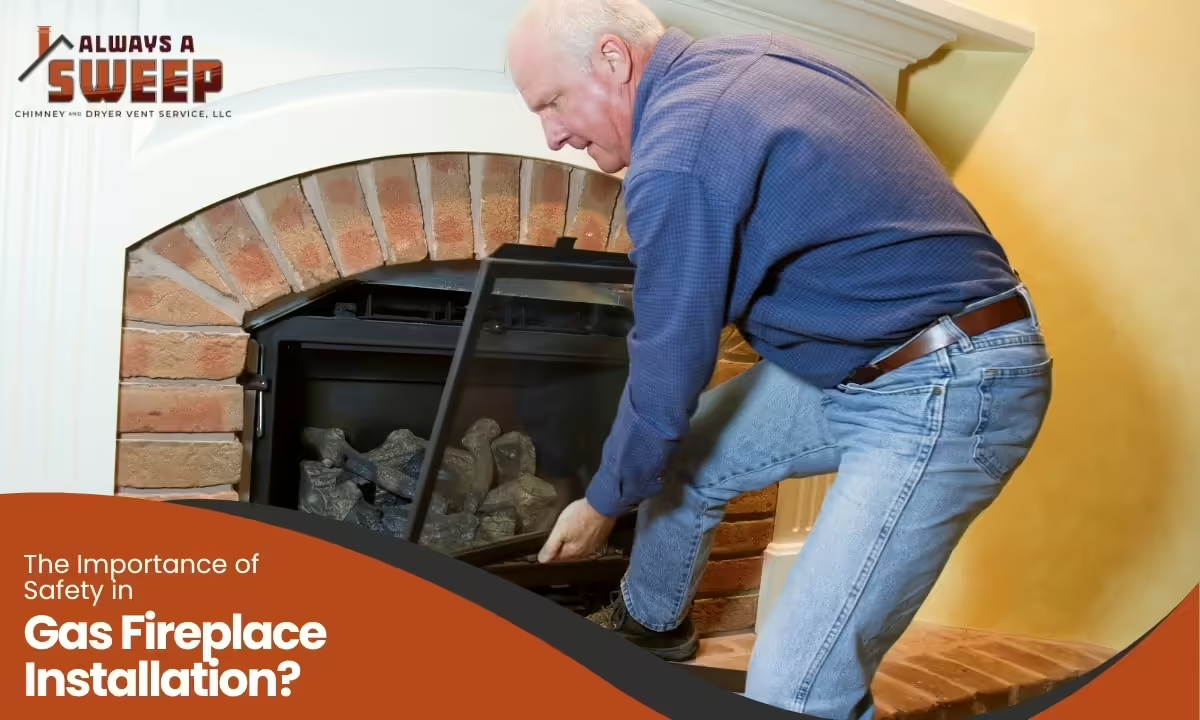
Installing a gas fireplace can transform your living space, providing warmth and ambiance with the convenience of modern technology. However, the installation process involves various technical and safety challenges that should not be underestimated. Ensuring a safe installation is crucial to prevent accidents, property damage, and health risks.
Many homeowners attempt to handle gas fireplace installations on their own, underestimating the complexities involved. Without proper knowledge and experience, these installations can lead to significant safety hazards, such as gas leaks and carbon monoxide exposure. Understanding and implementing essential safety measures during installation is vital to protect your home and family.

Neglecting safety measures during gas fireplace installation can have dire consequences. These risks underscore the importance of following proper protocols and procedures to ensure a safe and successful installation.
The risks associated with neglecting safety measures highlight the need for professional expertise and attention to detail during installation.

To ensure a safe and efficient gas fireplace installation, it is essential to follow professional safety measures and best practices. Always A Sweep is committed to providing expert installation services with a focus on safety and quality. Here is an overview of the key safety measures to follow during gas fireplace installation.
Before installation begins, a comprehensive site inspection is essential to assess potential risks and ensure the area is suitable for a gas fireplace.
A thorough site inspection helps identify potential hazards and ensures the installation is conducted in a safe and compliant manner.
Choosing the right equipment and materials is crucial for a safe and efficient installation. Always A Sweep provides expert guidance to help you select the best options for your needs.
Selecting the right equipment and materials is a key step in preventing safety issues and ensuring the longevity of your gas fireplace.
The installation of gas lines requires precision and expertise to ensure safe operation. Always A Sweep’s experienced technicians handle this critical step with care and attention to detail.
Professional installation of gas lines is essential to prevent leaks and ensure the safe operation of your gas fireplace.
Proper ventilation and exhaust systems are vital to the safe operation of a gas fireplace, preventing the buildup of harmful gases.
Ensuring proper ventilation and exhaust is critical to preventing carbon monoxide buildup and ensuring the safety of your home.
The physical installation of the fireplace unit involves securing it safely and ensuring it operates efficiently.
Securing the fireplace unit properly is crucial to preventing accidents and ensuring safe operation.
Before completing the installation, a final safety inspection is necessary to ensure all components are secure and functioning correctly.
A final safety inspection ensures that the fireplace is installed correctly and safely, ready for use.
Regular maintenance and support are essential to keeping your gas fireplace in optimal condition. Always A Sweep offers comprehensive maintenance services to ensure safety and performance.
Proper maintenance ensures the longevity and safe operation of your gas fireplace, providing comfort and peace of mind.
Do not compromise on safety when it comes to your gas fireplace installation. Trust the experts at Always A Sweep to handle the installation process with precision and care, ensuring the highest safety standards are met.
The page you requested could not be found. Try refining your search, or use the navigation above to locate the post.
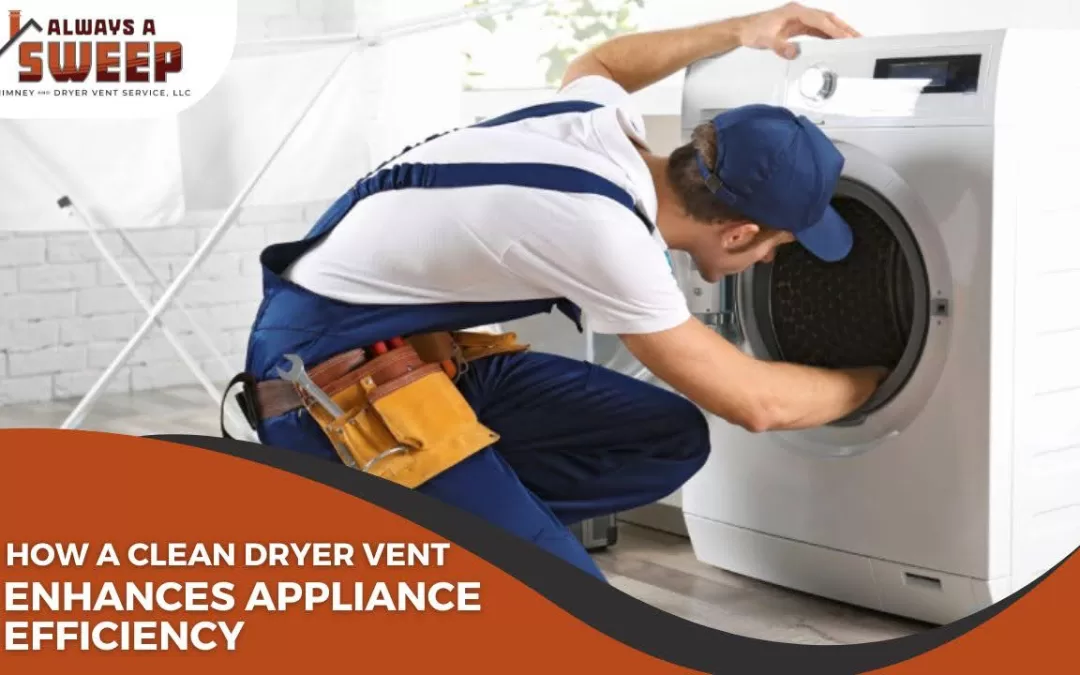
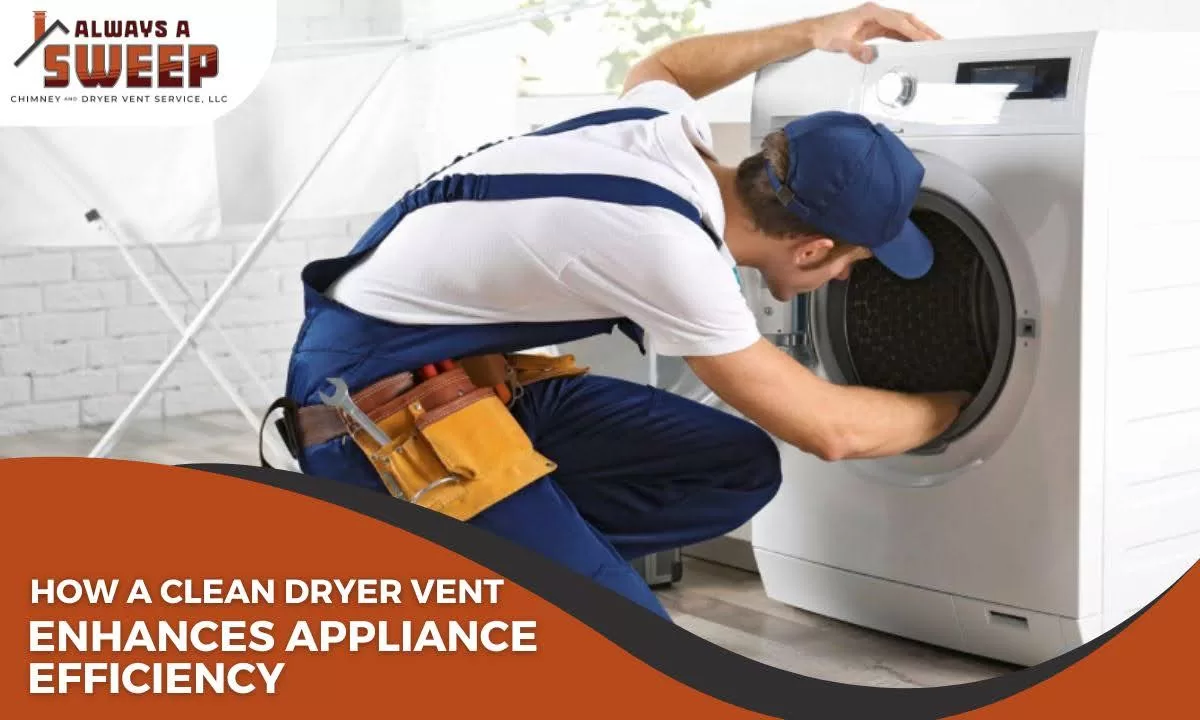
Maintaining a clean dryer vent is crucial for optimizing your appliance’s performance and energy efficiency. At Always A Sweep, we understand that a clean dryer vent not only ensures effective operation but also contributes to overall energy savings and safety. Here is a detailed look at how a clean dryer vent benefits your dryer and your home.
Enhanced Drying Efficiency
A clean dryer vent allows your appliance to operate at its maximum efficiency. When the vent becomes clogged with lint and debris, airflow is significantly restricted. This obstruction forces your dryer to work harder and longer to dry clothes, leading to extended drying times. Over time, this increased workload can cause unnecessary strain on the appliance, potentially leading to premature wear and malfunction. By keeping the vent clear, you enable your dryer to dry clothes more quickly and effectively, which not only improves performance but also reduces the time and energy required for each drying cycle. This efficiency translates to lower energy consumption and reduced utility bills.
Regular professional cleaning of the dryer vent is essential to maintain optimal airflow. Scheduling routine cleanings can prevent blockages from forming and ensure that your dryer operates efficiently. Periodic inspections of the vent system can also help identify any potential issues before they become significant problems.
Extended Appliance Lifespan

A clean dryer vent contributes to the longevity of your appliance. When lint and debris accumulate, they cause the dryer to overheat as it struggles to expel hot air. This overheating can damage internal components, leading to more frequent repairs or even the need for a complete replacement. By ensuring that your dryer vent remains free of obstructions, you help prevent overheating and reduce the risk of mechanical damage. This proactive maintenance approach can extend the lifespan of your dryer, saving you money on costly repairs and replacements over time.
Incorporating professional maintenance into your routine is an effective way to keep your dryer in good condition. Promptly addressing any signs of malfunction or damage can further prevent unnecessary wear and extend the appliance’s operational life.
Improved Energy Efficiency
The efficiency of your dryer is closely linked to the cleanliness of its vent system. A clogged vent forces the appliance to use more energy to achieve the same drying results. This inefficiency can lead to increased energy consumption, which is reflected in higher utility bills. By maintaining a clean vent, you enhance the energy efficiency of your dryer. Efficient drying cycles reduce the overall amount of energy required, leading to lower energy costs and a more environmentally friendly home.
Regular inspections and cleanings are essential for maintaining energy efficiency. Ensuring that the vent is clear of debris allows your dryer to operate with minimal energy expenditure, contributing to both cost savings and environmental benefits.
Enhanced Safety

Safety is a critical concern when it comes to dryer maintenance. A clogged dryer vent is a significant fire hazard due to the buildup of lint and debris, which can easily ignite when exposed to high temperatures. By keeping the vent clean, you reduce the risk of fire and ensure that your dryer operates safely. Regular cleaning also helps prevent other potential safety issues related to overheating and malfunction.
Incorporating dryer vent cleaning into your home safety routine is a simple yet effective way to protect your property and loved ones. Installing safety devices, such as lint alert systems, can further enhance your home’s safety by monitoring lint levels and alerting you to potential issues.
Optimized Appliance Performance

The performance of your dryer is directly affected by the condition of its vent. A clean vent allows the appliance to operate as intended, providing consistent and reliable performance. This ensures that your dryer performs effectively, delivering optimal drying results every time. Reliable operation is crucial for maintaining the efficiency and effectiveness of your appliance.
Engaging professional services for thorough vent cleaning and maintenance is key to optimizing performance. Regular monitoring and maintenance checks help ensure that your dryer continues to operate efficiently and effectively.
Reduced Wear and Tear
A clean dryer vent minimizes the wear and tear on your appliance. When the vent is obstructed, the dryer has to work harder to expel hot air, leading to increased mechanical strain. This additional strain can cause components to wear out more quickly, leading to frequent repairs and potential breakdowns. By keeping the vent clean, you reduce the mechanical stress on your dryer, allowing it to function smoothly and last longer.
Scheduling regular professional cleanings helps alleviate mechanical strain and prevent premature wear. Routine maintenance checks can further address any emerging issues, ensuring that your dryer remains in optimal condition.
The page you requested could not be found. Try refining your search, or use the navigation above to locate the post.
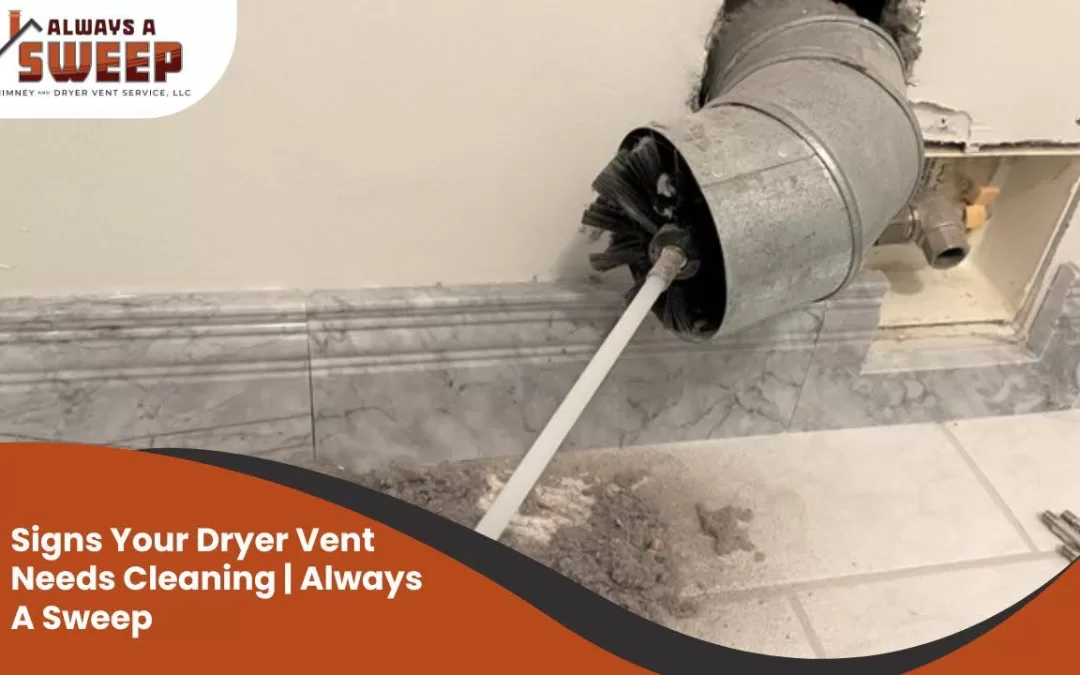

Maintaining a clean dryer vent is essential for the efficiency and safety of your home. At Always A Sweep, we understand that ignoring dryer vent maintenance can lead to decreased performance and increased safety risks. Identifying the signs that your dryer vent needs cleaning can prevent these issues. This blog will guide you through the key indicators and the steps you can take to address them effectively.
Longer Drying Times
If you have noticed that your clothes are taking significantly longer to dry, this could be a sign of a clogged dryer vent. When the vent is blocked or restricted, airflow is impeded, causing your dryer to work harder and longer to get the job done. This not only affects the efficiency of your dryer but also increases energy consumption.
To resolve this issue, first, check your dryer vent for any obstructions that could be blocking the airflow. A professional inspection and cleaning can help ensure that the vent is completely clear, restoring your dryer’s efficiency and reducing energy costs.
Hot and Humid Laundry Room

Experiencing excessive heat and humidity in your laundry room after using the dryer is another indicator that your dryer vent may need attention. Proper ventilation should channel heat and moisture outside, but if the vent is clogged, these elements can be redirected into your home, creating an uncomfortable environment.
Addressing this issue involves inspecting the vent for blockages and ensuring that it is properly connected and functioning. Regular maintenance can prevent the buildup of lint and other debris, which helps maintain a comfortable and safe laundry area.
Excessive Lint Accumulation
While some lint buildup in the dryer trap is normal, excessive accumulation of lint around your dryer or in unusual places is a sign of potential vent problems. This could indicate that the vent is not effectively expelling lint, which can lead to potential fire hazards and decreased dryer performance.
To tackle this problem, clean out the lint trap thoroughly and check the vent for excessive lint buildup. Scheduling a professional cleaning can help address any underlying issues and ensure that your dryer operates safely and efficiently.
Burning Smell

A burning smell during or after using your dryer is a serious warning sign that your dryer vent needs immediate attention. This odor typically results from lint buildup causing the dryer to overheat, which can be a significant fire hazard.
If you detect a burning smell, stop using the dryer immediately and inspect the vent for any blockages or obstructions. Contact a professional for a thorough cleaning and inspection to address this urgent issue and prevent potential fire risks.
Dryer Gets Too Hot
If the exterior of your dryer feels excessively hot to the touch, it may indicate that the dryer vent is not functioning correctly. A clogged or obstructed vent restricts airflow, leading to overheating and potential damage to the dryer.
To prevent overheating, ensure that the dryer vent is clear of any blockages and that it allows for proper airflow. Regular maintenance and inspection by a professional can help keep the vent in optimal condition and prevent overheating issues.
Visible Lint Around the Dryer Area

Finding lint around the dryer or in the vicinity of the vent is a sign that the vent system is not effectively expelling lint. This accumulation can create a fire hazard and indicates that the vent system needs attention.
Cleaning the area around the dryer and inspecting the vent for blockages are important steps in addressing this issue. A professional cleaning service can help ensure that the vent system is functioning properly and safely.
Frequent Need to Clean the Lint Trap
If you find yourself cleaning the lint trap more frequently than usual, it may be a sign that the dryer vent is clogged. An efficient vent system should reduce the frequency of lint trap cleaning by effectively expelling lint.
To address this issue, inspect the vent for any obstructions and ensure that it is functioning properly. Regular maintenance and professional cleaning can help reduce lint buildup and improve the efficiency of your dryer.
Reduced Airflow from the Vent
Reduced airflow from the dryer vent is a clear indicator that there may be a blockage or restriction in the system. Effective airflow is crucial for proper drying and ventilation.
Check the vent for any obstructions and clear any blockages you find. Scheduling regular professional inspections and cleanings can help maintain optimal airflow and prevent potential issues with your dryer.
Why Electric Fireplaces Are the Best Option for Apartments and Small SpacesAs more people embrace apartment living and smaller homes, finding ways to maximize space and comfort has become essential. One key feature that homeowners and renters alike often desire is the...
How Size and Condition Affect the Cost of Chimney Cleaning When it comes to maintaining a safe and efficient chimney, cleaning is a crucial task. However, the cost of chimney cleaning can vary significantly based on several factors, with size and condition being the...
How Can You Ensure Compliance with Local Regulations During Wood Burning Installation? Installing a wood-burning stove or fireplace can add warmth and charm to your home, but it also comes with responsibilities. One of the most critical aspects of this installation is...